How to get certified to ISO/IEC 27001
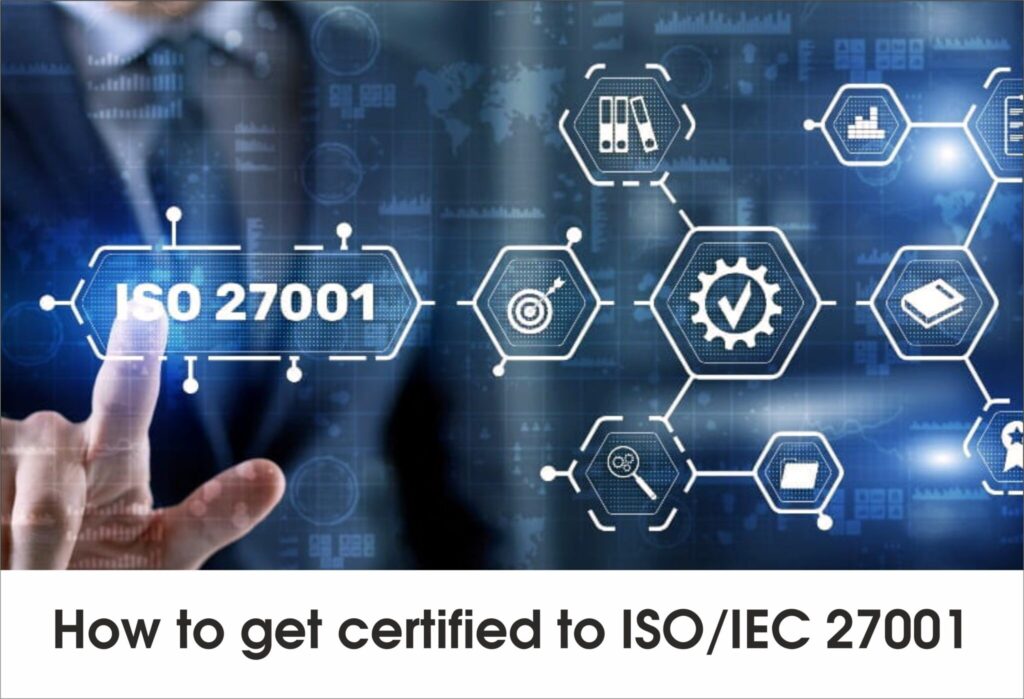
Information Security Management Systems (ISMS) are required to adhere to the international standard ISO/IEC 27001. An extensive audit is part of the certification process and is performed by an established certifying authority. Here’s a step-by-step guide on how to get certified :- Understand the Standard: Understanding the ISO/IEC 27001 standard, its principles, and requirements is crucial before beginning the certification process. Reading the standard in its entirety or taking training sessions can help you achieve this. Perform a Gap Analysis: This initial assessment will show where your organisation stands in relation to the standard. To follow ISO/IEC 27001, you must first identify the areas that require improvement. Implement the ISMS: According to the specifications of the ISO/IEC 27001 standard, develop your information security management system. As part of this, the scope must be established, followed by the relevant policy and procedures being written, risk management techniques being put into action, and controls being established. Conduct Internal Audits: Conduct internal audits after implementing your Information Security Management System (ISMS) in place to evaluate the system’s performance and find any areas that need improvement. This will assist you in getting ready for the external audit. Management Review: For continued appropriateness, sufficiency, and effectiveness, top management should assess the Information Security Management System (ISMS) at predetermined intervals. Choose a Certification Body: Choose a recognised certification body to carry out your external audit. Verify if they have received national accreditation from a reputable organisation. External Audits: An external audit will be conducted by the certification body. This normally involves two stages: Stage 1 is a preliminary, informal review of the Information Security Management System (ISMS) and Stage 2 is a more in-depth, formal review. Address Any Non-Conformities: You won’t be able to be certified unless you fix any non-conformities that the auditor finds. Certification: You will be granted your ISO/IEC 27001 certification if you successfully complete the external audit and rectify non-conformities if received. Continuous Improvement: Your Information Security Management System (ISMS) must be continually improved to comply with ISO/IEC 27001. This requires regular reviews and audits to maintain continuous compliance and to find areas for improvement. Enjoy Reading – New Version of ISO 27001:2022 Certification Demystifying ISO 27701: A Comprehensive Guide to Privacy Information Management Systems CMMI Certification: Optimising Processes to Achieve Goals 10 Benefits of Getting ISO 41001 Certification for Facility Management System
Quality Management of Medical Devices – ISO 13485 Implementation Guide
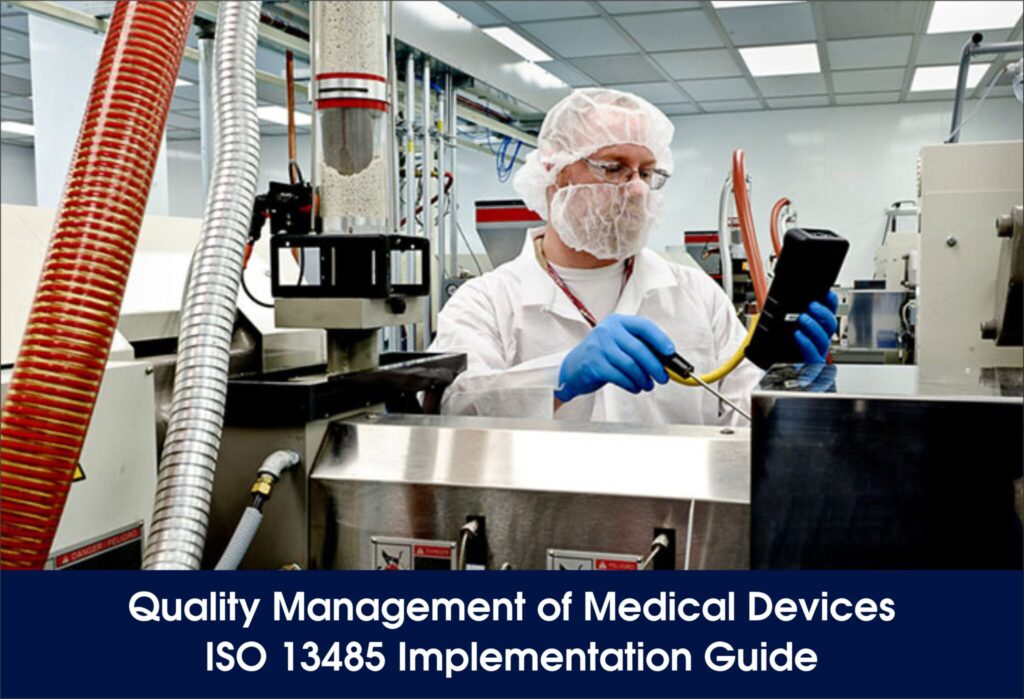
Introduction ⮯ ISO 13485:2016 is a quality management system specifically designed for medical devices and related services. It helps organizations to demonstrate their ability to provide medical devices and related services that consistently meet customer requirements and regulatory requirements applicable to medical devices and related services. Manufacturers of medical devices should be aware of ISO 13485 since it offers a framework for making sure that their products consistently satisfy consumer and regulatory requirements. An organization’s dedication to manufacturing safe and efficient medical equipment is demonstrated by compliance with this criterion. Additionally, in many global marketplaces, it aids businesses in meeting regulatory obligations. The design, development, and manufacturing of medical devices might present certain hazards, which ISO 13485 can assist businesses in identifying and reducing. Lastly, it may assist businesses in streamlining their operations and boosting productivity, which will result in better goods and more customer satisfaction. The Key Components of ISO 13485: A Comprehensive Overview ISO 13485 is an internationally recognized standard that sets out the requirements for a quality management system in the medical device industry. Compliance with this standard is crucial for companies involved in the design, development, production, and distribution of medical devices. One of the key components of ISO 13485 is establishing a quality policy and objectives. This involves defining clear goals and targets related to product quality, customer satisfaction, and regulatory compliance. By having a well-defined quality policy in place, companies can ensure that their operations align with industry best practices. Another important aspect of ISO 13485 is document control procedures. This includes establishing processes for creating, reviewing, approving, and updating documents such as standard operating procedures (SOPs), work instructions, and forms. Effective document control ensures that employees have access to accurate and up-to-date information, reducing the risk of errors or non-compliance. Risk management plays a crucial role in ISO 13485 as well. Medical devices carry inherent risks to patients and users, so manufacturers need to identify potential hazards and implement appropriate controls to mitigate them. The standard requires organizations to establish a systematic approach to risk assessment and management throughout the product lifecycle. By adhering to these key components of ISO 13485, companies can demonstrate their commitment to producing safe and effective medical devices while complying with regulatory requirements. Implementing robust quality policies, effective document control procedures, and comprehensive risk management practices not only ensures compliance but also enhances customer trust in the products being manufactured. The Step-by-Step Process of Implementing ISO 13485 in Your Organization ⮯ Here’s a step-by-step process for implementing ISO 13485:2016 in your organization: Understand the Standard: It’s essential to understand a standard’s requirements before putting them into practice. The quality management systems standard ISO 13485 focuses on documentation, management accountability, resource management, product realisation, measurement, analysis, and improvement. To fully understand the specifications of ISO 13485, think about obtaining formal training. Perform a Gap Analysis: To find any gaps, you must assess your present processes against the requirements of ISO 13485. This will enable you to comprehend the adjustments required to comply with the standard. Develop an Implementation Plan: Create a strategy explaining how you will fulfil every requirement of the standard based on the findings of the gap analysis. This should include timelines, responsibilities, and resources needed. Develop Documentation: A significant amount of documentation is needed to comply with ISO 13485, including a quality manual, procedures, job instructions, and records. Ensure that each document is prepared and complies with ISO 13485 requirements. Implement Your Quality Management System (QMS): Implement the steps and techniques described in your documentation. This entails educating workers about updated procedures, setting fresh quality goals, and putting new monitoring and measuring methods in place. Conduct Internal Audits: Conduct internal audits after your Quality Management System (QMS) has been put in place to make sure it is functioning as planned and according to ISO 13485 requirements. This will also help identify areas for improvement. Management Review: The QMS should be reviewed by top management to ensure its continued suitability, adequacy, and effectiveness. This should involve determining the need for adjustments to the Quality Management System (QMS) and areas for improvement. Corrective and Preventive Actions: Take corrective and preventative measures to eliminate the source of any possible non-conformities or deficiencies based on the findings of internal audits and management reviews. External Audit and Certification: Finally, appoint a qualified external auditor to audit your Quality Management System (QMS) against ISO 13485. The auditor will give you an ISO 13485 certificate if you pass the audit. Continuous Improvement: Continuous QMS improvement is mandated by ISO 13485. This may be accomplished by conducting routine audits, conducting management reviews, and implementing corrective and preventative measures in action. The Benefits and Challenges of Implementing ISO 13485 for Medical Device Manufacturers ⮯ Benefits Enhanced Product Quality: Product quality and safety are the main objectives of ISO 13485. The implementation of it results in the development of reliable procedures that improve product quality, reduce errors, and guarantee that products adhere to client and regulatory standards. Improved Risk Management: The standard places a strong emphasis on risk management across the whole product lifetime, which can assist manufacturers in identifying and minimising possible hazards early in the process and reducing failures and recalls. Increased Market Access: For market access, several nations require ISO 13485 certification. Consequently, obtaining this accreditation may allow producers access to new foreign markets. Competitive Advantage: A competitive advantage may be gained by manufacturers through ISO 13485 certification, which shows stakeholders and consumers that they are committed to quality and safety. Challenges: Resource Intensive: The process of implementing ISO 13485 into practice can be time-consuming and expensive. This includes internal audits, creating fresh procedures, and training employees. Maintaining Compliance: Manufacturers who have received certification must continue to monitor and enhance their quality management system to retain compliance, which calls for continual work and resources. Change Management: It is common for ISO 13485 implementation to call for adjustments to organisational culture and procedures. It can be difficult to manage these changes, especially in larger organisations. Documentation Requirements: There
What is the ISO 13485 standard for medical devices?
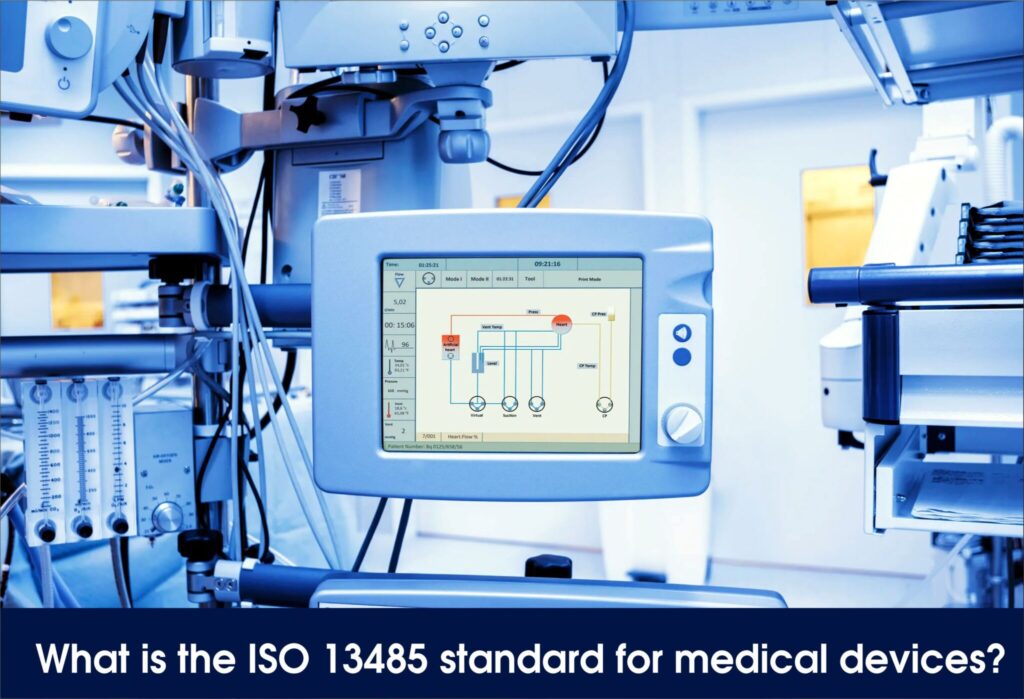
In the fast-paced and ever-evolving world of the medical device industry, ensuring the highest standards of quality is paramount. With patient safety at stake, it is crucial for companies operating in this sector to have robust quality management systems in place. This introduction will shed light on the importance of quality management in the medical device industry and how it contributes to regulatory compliance, adherence to ISO 13485 standards, and overall success in the healthcare industry. The medical device industry faces unique challenges due to its complex nature and stringent regulatory requirements. Manufacturers must navigate through a maze of regulations, guidelines, and standards to ensure that their products are safe, effective, and meet the needs of patients and healthcare professionals alike. This is where a well-implemented quality management system becomes indispensable. ISO 13485 serves as a globally recognized standard for quality management systems specific to the medical device industry. Compliance with this standard demonstrates an organization’s commitment to consistently meeting customer requirements while adhering to applicable regulatory requirements. It provides a framework that enables companies to establish efficient processes for product development, manufacturing, distribution, installation, and servicing. By implementing a robust quality management system based on ISO 13485 principles, organizations can streamline their operations while minimizing risks associated with product defects or non-compliance. Such systems facilitate effective documentation control, risk management practices, supplier evaluation processes, corrective action procedures, and internal audits – all essential elements for maintaining high-quality standards throughout the product lifecycle. Furthermore, investing in quality management not only ensures compliance but also enhances reputation within the healthcare industry. Healthcare providers rely on manufacturers who can consistently deliver safe and reliable devices that meet regulatory requirements. Demonstrating compliance with ISO 13485 or other relevant regulations builds trust among stakeholders by showcasing an organization’s commitment towards patient safety. What is ISO 13485 and the benefits of Implementing ISO 13485 for Medical Device Manufacturers and End-users? ISO 13485 is an internationally recognized quality management system standard specifically designed for the medical devices industry. It is based on the ISO 9001 process model approach and serves as a useful framework for manufacturers to handle the obligations under the Medical Device Directives. Medical device producers and end users can both benefit from implementing ISO 13485 For Manufacturers: ⮯ Medical device producers and end users can both benefit from implementing ISO 13485 For Manufacturers: Improved Product Quality: The overall quality of products is increased as a result of the process-based approach that ISO 13485 encourages for creating, implementing, and enhancing the performance of a quality management system. Regulatory Compliance: The standard aids organisations in proving they are in conformity with laws everywhere, which may open up more market opportunities. Risk Management: The requirements for risk management are incorporated into ISO 13485 at every stage of the product realisation process, offering a proactive method of detecting and reducing risks. Operational Efficiency: The standard promotes a methodical approach to managing processes, increasing operational consistency and efficiency. Enhanced Customer Satisfaction: Manufacturers may increase customer satisfaction and establish long-lasting connections by providing high-quality products and satisfying client requests. Competitive Advantage: As it shows a dedication to quality, having ISO 13485 certification might give an advantage over rivals who lack it. Benefits from implementing ISO 13485 For End-Users: Assured Product Safety: The emphasis on risk management in ISO 13485 makes sure that patient safety is put first when designing and producing medical devices. Reliable Performance: End users may trust the dependability of ISO 13485-certified goods since the standard places a strong emphasis on consistent performance. Increased Trust: Trust in the product and the producer may both rise when consumers are aware that the maker upholds an internationally acknowledged quality standard. Product Traceability: Record-keeping and traceability are required by ISO 13485, which might be important in the event that a medical device has problems or is recalled. Conclusion ✅ In Conclusion: The Significance of ISO 13485 in Ensuring Quality and Safety in the Medical Device Industry In conclusion, ISO 13485 plays a crucial role in ensuring quality and safety in the medical device industry. By raising standards and promoting a culture of continuous improvement, this international standard helps companies in the healthcare sector deliver products that meet regulatory requirements and exceed customer expectations. Adherence to ISO 13485 not only demonstrates a commitment to quality management but also instills confidence in stakeholders such as healthcare professionals, patients, and regulatory bodies. It provides a framework for organizations to establish robust processes, implement risk management strategies, and maintain effective documentation systems. Through regular audits and assessments, companies can identify areas for improvement and take proactive measures to enhance their operations. This constant drive for excellence contributes to the overall growth of the organization while ensuring the safety of medical devices used by millions of people worldwide. In an industry where precision, reliability, and patient well-being are paramount, ISO 13485 serves as a guiding force that drives organizations towards best practices. By adhering to this standard, companies can navigate complex regulatory landscapes with ease while maintaining their focus on delivering high-quality products that save lives and improve patient outcomes. In summary, ISO 13485 is not just a certification; it is an essential tool for achieving excellence in the medical device industry. Its significance lies in its ability to raise standards, foster continuous improvement through adherence to quality management systems, and ultimately ensure the highest levels of quality and safety in healthcare. Enjoy Reading – How Does ISO 13485 Certification Help Medical Device Manufacturers Know about ISO 13485:2016 Certification
Why ISO 22301 is Crucial for Business Continuity and Disaster Recovery
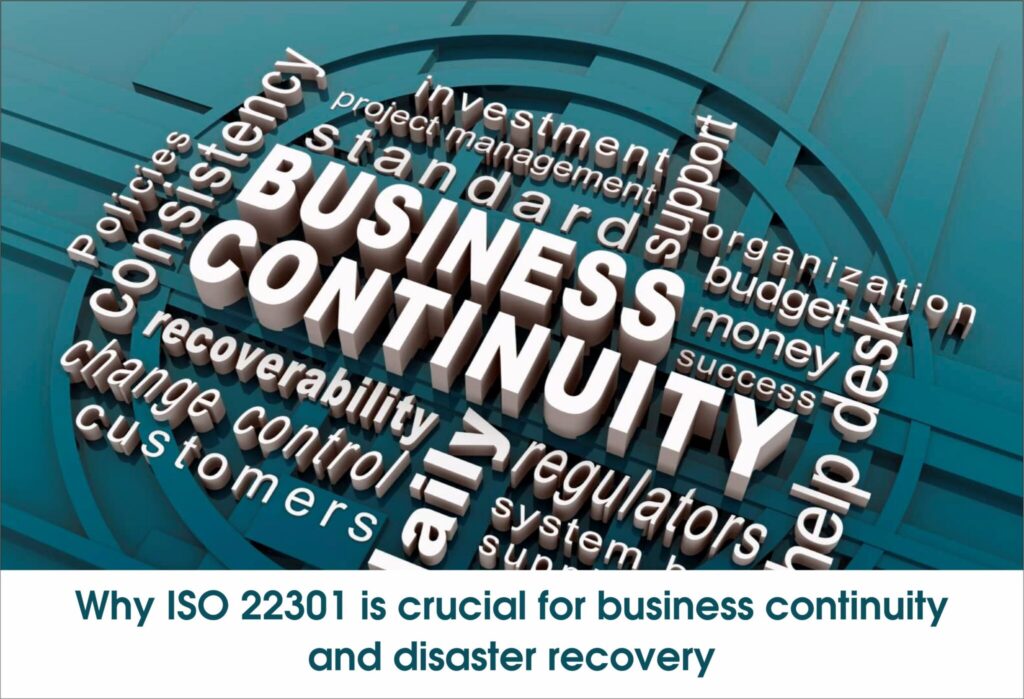
What is ISO 22301:2019 Certification? ISO 22301:2019 is an international standard for Business Continuity Management (BCM). It is designed to help organizations protect their business operations from disruptions and ensure the continuity of services. The standard outlines the best practices for developing, implementing, operating, monitoring and maintaining a Business Continuity Management system. It also provides guidance on how to respond to incidents and manage risks associated with them. ISO 22301 helps organizations plan for potential disruptions and minimize the impact on their operations. Your continuity management plan’s ISO 22301 accreditation assures that it will continue to operate normally even in the event of an emergency. ISO 22301 Certification Business Continuity Management System (BCMS) Certification benefits for an organization ⮯ – ISO 22301 standards outline a step-by-step plan for creating and keeping up efficient business continuity management operations and it reduces the impact of events by taking a forceful stance. – It helps to indicate compliance with influencers and stakeholders across all sectors and organizations. – An efficient BCMS ensures the avoidance or minimizing of losses in the event of calamities, protecting the revenue stream. -The adoption of a BCMS based on ISO 22301 shows that the company complies with legal and regulatory standards, which reduces the likelihood that it will face sanctions for breaking the law. -Business continuity management thoroughly evaluates the impact of the disruption to determine the products and services that are essential for the organization’s existence. ISO 22301 standard, business continuity management system, disaster recovery planning, risk management ⮯ In today’s uncertain world, business continuity planning has become paramount for organizations of all sizes. The ability to navigate through unexpected disruptions and maintain operations is crucial for long-term success and survival. The importance of business continuity cannot be overstated. It ensures that a company can continue to deliver its products or services, meet customer demands, and minimize the impact of any potential crisis or disaster. It is not just about surviving in times of adversity but also about thriving and gaining a competitive edge. Business resilience is the key to weathering storms and emerging stronger on the other side. By proactively identifying potential risks, developing strategies to mitigate them, and implementing robust crisis management protocols, organizations can significantly reduce downtime and financial losses. Disruptions can come from various sources such as natural disasters, cyber-attacks, or even global pandemics like COVID-19, having a solid business continuity plan is no longer an option but a necessity. A well-prepared organization can effectively respond to crises by quickly adapting its operations, ensuring employee safety, maintaining customer trust, and minimizing the negative impact on its bottom line. Moreover, businesses that demonstrate resilience in times of adversity often gain credibility and trust from stakeholders including customers, investors, and employees. How ISO 22301 Helps Businesses Mitigate Risks and Minimize Disruptions ⮯ In today’s fast-paced and unpredictable business landscape, organizations face various risks and disruptions that can significantly impact their operations. This is where ISO 22301 comes into play, offering a robust framework to help businesses mitigate risks and minimize disruptions. ISO 22301 focuses on disaster recovery strategies, emergency response plans, and incident management procedures. By implementing this standard, businesses can proactively identify potential risks and develop comprehensive plans to address them effectively. One of the key benefits of ISO 22301 is its emphasis on business continuity management. It helps organizations establish a solid foundation for maintaining critical functions during unexpected events such as natural disasters, cyber-attacks, or supply chain disruptions. By having well-defined emergency response plans in place, businesses can ensure a swift and coordinated response to any incident. This not only minimizes the impact of disruptions but also enhances the organization’s resilience in the face of adversity. Furthermore, ISO 22301 promotes a proactive approach to risk management. It encourages businesses to regularly assess potential threats and vulnerabilities while continuously improving their disaster recovery strategies. This enables organizations to stay ahead of emerging risks and adapt their plans accordingly. ISO 22301 Certification Requirements ⮯ ISO 22301 certification requirements are essential for organizations looking to establish and maintain an effective business continuity management system. Achieving this certification demonstrates a commitment to mitigating risks, ensuring the continuity of critical operations, and safeguarding the interests of stakeholders. To obtain ISO 22301 certification, organizations must adhere to specific requirements outlined by the International Organization for Standardization (ISO). These requirements encompass various aspects of business continuity management, including risk assessment and analysis, business impact analysis, development of a business continuity plan, implementation and testing of controls, and ongoing monitoring and improvement. One key requirement is conducting a thorough risk assessment to identify potential threats and vulnerabilities that could disrupt operations. This involves analyzing internal and external factors that could impact the organization’s ability to deliver products or services. Based on this assessment, organizations must develop strategies to mitigate identified risks effectively. Another crucial requirement is performing a comprehensive business impact analysis (BIA). This process helps determine the potential consequences of disruptions on various aspects such as financial stability, customer satisfaction, reputation, legal compliance, and employee safety. The BIA findings guide the development of a robust business continuity plan tailored to address specific risks identified during the assessment phase. Implementing controls to minimize disruption is another important aspect of ISO 22301 certification. Organizations must establish procedures for incident response management, crisis communication protocols, backup systems for critical infrastructure or data repositories, and alternate work arrangements during emergencies or disasters. Regular testing and evaluation of these controls are necessary to ensure their effectiveness in real-world scenarios. Furthermore, organizations seeking ISO 22301 certification must demonstrate their commitment to continuous improvement by establishing performance metrics and monitoring mechanisms. Regular audits help identify areas for enhancement while providing evidence of compliance with ISO standards. ISO 22301 Certification cost The cost to become certified to ISO 22301 is not set in stone. It relies on a variety of variables, like your company’s complexity, overall staff, number of office branches, branch location, etc. Additionally, organisations having ISO 22301 certification may frequently meet their quality goals for
ISO 22000 Food Safety Management Systems
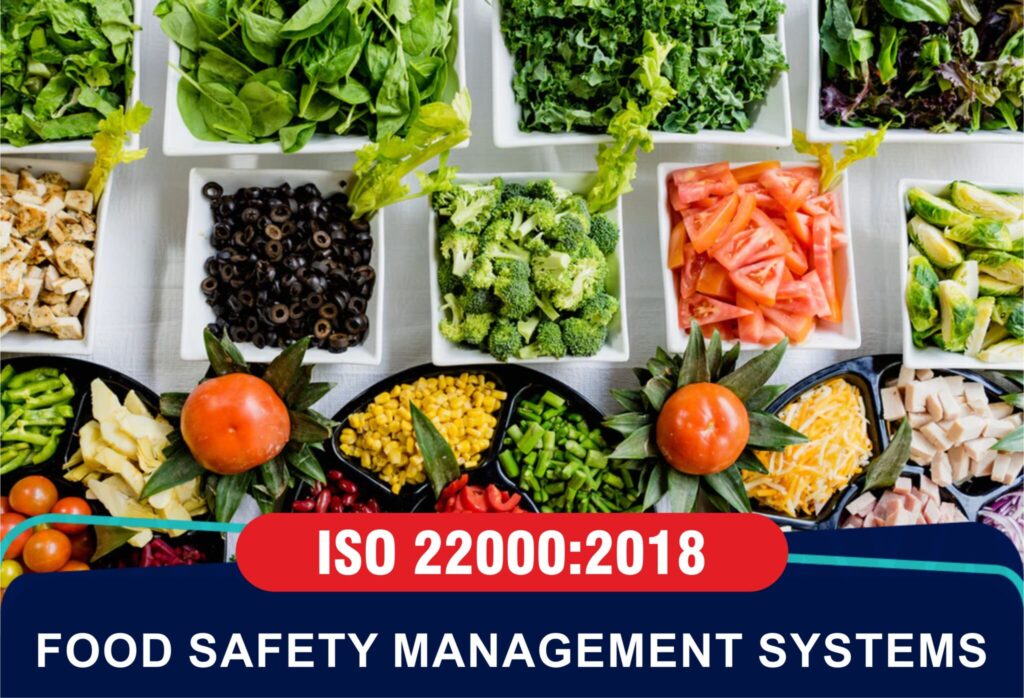
ISO 22000 is an international standard for food safety management systems, designed to ensure the safety of food products during production and distribution. It specifies the requirements for a food safety system that involves Hazard Analysis and Risk-based preventive controls (HACCP), as well as other aspects such as product traceability, employee training and monitoring. Food safety is a major concern on a worldwide scale. It might be described as the actual knowledge that ingesting food would not cause harm or sickness. With ISO 22000 certification, businesses can demonstrate their commitment to producing safe food and beverages for consumers. The standard applies to all types of organizations involved in the food chain, from farm to fork. Companies that comply with ISO 22000 are better equipped to minimize risks related to food safety and contamination, while also improving their reputation among customers. Why ISO 22000 was Introduced ISO 22000 is a Food Safety Management System (FSMS) standard developed by the International Organization for Standardization (ISO). It was first published in 2005 and is designed to provide organizations with a framework for managing food safety risks throughout the entire food chain. The standard is based on the Hazard Analysis and Critical Control Point (HACCP) principles, which are internationally recognized methods of controlling food safety hazards. ISO 22000 food safety management systems were introduced to ensure that food producers and retailers adhere to the highest standards of safety and quality. The requirements of ISO 22000 Food safety: – It refers to the practises and guidelines your company must adhere to across its supply chain to maintain food safe for consumption. Management responsibility: – The areas that your management team must prioritise, participate in, and be accountable for are known as management responsibility. Resource management: – It is the process of allocating resources, such as people, infrastructure, and facilities, to achieve the greatest performance. Measurement, Analysis, and Improvement: – The following clauses describe how to assess if your management system is performing as planned and allowing for ongoing system improvement. Some Key Elements of ISO 22000 ⮯ – Interactive communication: Communication is crucial along the food supply chain to ensure that all relevant food safety concerns are identified and effectively controlled at each stage. The organization’s upstream and downstream processes are implied by this. – System management: The most efficient food safety systems should be created, run within a defined management framework, and then integrated into the organization’s overall management operations. – Programme Requisite: There are two subcategories under which the required programmes are divided. The programmes for infrastructure and maintenance deal with permanent elements in food safety. Reduced risk of hazards in the product or processing environment is the goal of operational precondition programmes. – HACCP Principles: A HACCP plan is used to manage the important control points that were identified during the hazard analysis as being necessary to completely remove, avoid, or significantly minimize a particular food safety hazard from the product. Advantages of Implementing ISO 22000 ⮯ – Improved risk response: – Organizations that have a strong FSMS in place are better able to react quickly and effectively to problems that might jeopardize the safety of their food. By doing this, they may stop possible contamination and other food safety problems in their tracks. Additionally, the organization can react appropriately to unforeseen events due to the presence of emergency preparedness. – Reduced investigation time: – In the unlikely event that contamination does occur, a good FSMS directs organizations in a way that makes it easier to find the source of any food safety violations or security breakdowns. As a consequence, the issue is quickly resolved, and recurrence is avoided. – Cost-saving: – The standardization of all Hazard Analysis Critical Control Point (HACCP)-based standards is made possible by ISO 22000. – Opportunities for new enterprises: – Enhancing an organization’s capacity to collaborate with others by applying ISO 22000 as a requirement for contracts of cooperation. -Employee involvement: – ISO 22000 has a renewed emphasis on employee involvement, which is crucial for promoting a food safety culture throughout the organization. How does the food safety management system help a business? The business owner can reduce the chances of health hazards by adhering to well-specified procedures. Compliance with the rules is a must for businesses to maintain a sterling and reliable reputation. It assists companies in avoiding legal issues and accusations of food safety and regulatory violations. The company may stay clear of errors by using a flawless food safety management system. The effective implementation of a food safety management system makes it simple to avoid making poor purchasing selections, faults with budget management, contamination management systems, and other general errors. Enjoy Reading – What are the ISO 22000 requirements Guide For Food Safety Certifications Why Food Safety Certification is Important in Poland Anti-Bribery Management System as A Tool to Increase the Quality of Life
Demystifying ISO 27701: A Comprehensive Guide to Privacy Information Management Systems
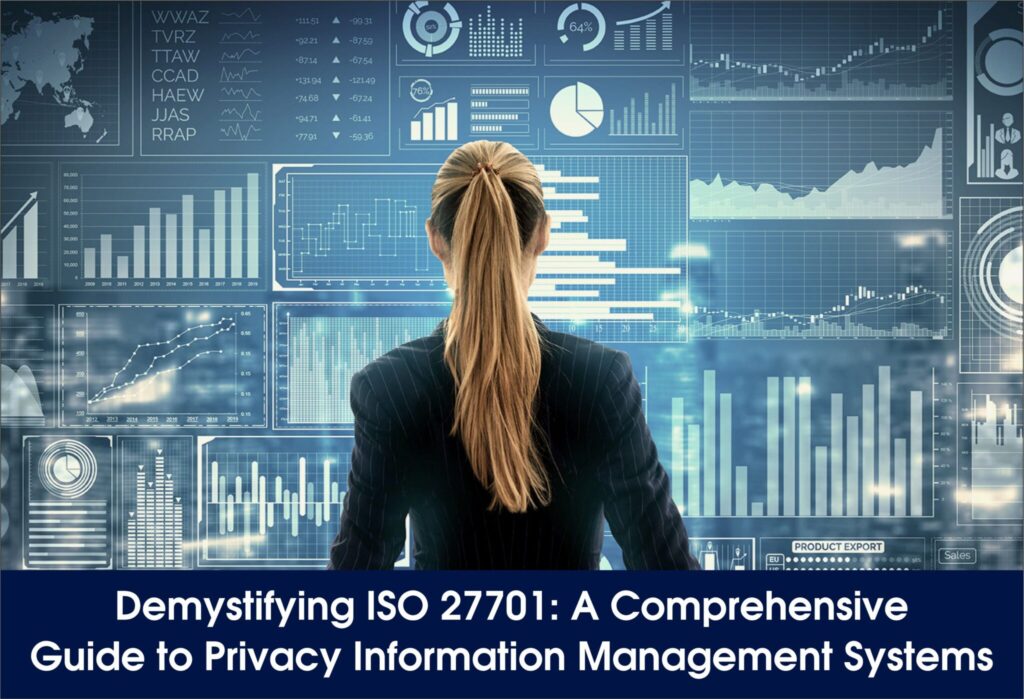
In today’s digital age, the protection of personal data has become a paramount concern for individuals and organizations alike. With the increasing reliance on technology and the vast amounts of data being collected, it is crucial to have robust systems to ensure this information’s privacy and security. This is where Privacy Information Management Systems (PIMS) come into play. PIMS refers to a set of processes, policies, and procedures designed to manage and protect personal data in compliance with relevant regulations such as ISO 27701 Standard. ISO 27701:2019 is an international standard that provides guidelines for establishing, implementing, maintaining, and continually improving a PIMS. It helps organizations identify potential risks related to privacy breaches and outlines measures to mitigate these risks effectively. Implementing a Privacy Information Management Systems (PIMS) enables organizations to take a proactive approach towards data protection. It helps them establish clear accountability for managing personal data throughout its lifecycle – from collection to processing, storage, transfer, and disposal. By adopting a Privacy Information Management Systems (PIMS) framework, organizations can demonstrate their commitment towards protecting individual privacy rights. This enhances customer trust and ensures compliance with applicable data protection laws and regulations. The Key Principles and Requirements of ISO 27701 ⮯ The Privacy Information Management System (PIMS), also known as ISO 27701, is an addition to ISO 27001 and ISO 27002 for privacy management within the context of the organisation. It offers a structure for creating, putting into practice, maintaining, and constantly enhancing a privacy information management system. The key principles and requirements of ISO 27701 include :- Scope and Applicability: ISO 27701 is applicable to all types and sizes of organizations, including public and private corporations, governmental agencies, and not-for-profit organisations, can use ISO 27701. Risk Assessment: Organisations must regularly undertake risk assessments to evaluate and manage privacy risks. Privacy Policy: The standard mandates that businesses create a privacy policy that is in line with their legal obligations as well as their privacy goals. Roles and Responsibilities: Organisations must establish roles and responsibilities for managing privacy, including the selection of a person or group to be in charge of privacy. Data Subject Rights: Organisations must develop policies to address data subjects’ rights, such as access, correction, erasure, limitation of processing, and data portability. Consent Management: The standard mandates that organisations handle data subject permission when it is required for data processing. Data Breach Notification: Organisations must have policies and processes in place to identify, disclose, and look into breaches of personal data. Training and Awareness: Organisations have to educate staff members and other relevant parties about privacy and data protection, as well as increase their knowledge of these concerns. Continuous Improvement: The standard encourages the Privacy Information Management System to be improved over time. Third-Party Management: The organisation must implement the necessary safeguards to secure personal data if it distributes it to outside parties. Implementing ISO 27701 can offer several benefits to organizations ⮯ Enhanced Privacy Management: Organisations may strengthen their privacy management by using ISO 27701 to build and enhance personal information management procedures. In addition to helping businesses comply with regulations, this may increase consumer happiness and confidence. Regulatory Compliance: There are stringent laws in many jurisdictions governing data privacy, such as the General Data Protection Regulation (GDPR) in the EU. Organisations can show compliance with these rules by putting ISO 27701 into practise, possibly avoiding fines and penalties. Risk Management: Organisations can stop or lessen possible breaches of personal information by detecting and managing privacy issues. They may avoid losing money and harming their reputation by doing this. Competitive Advantage: Organisations that have ISO 27701 accreditation might set themselves apart from rivals. They may benefit from this in markets where privacy is a major concern. Improved Business Relationships: Organisations may reassure their clients, stakeholders, and business partners about their commitment to privacy by implementing ISO 27701. This can strengthen commercial links and provide new possibilities. Global Recognition: Global acceptance of ISO standards. As a result, obtaining ISO 27701 certification may improve an organization’s reputation abroad. Continual Improvement: The constant improvement philosophy of ISO 27701 is shared by other ISO standards. As a result, businesses are urged to examine and enhance their privacy management on a regular basis, which can boost productivity. Cost Savings: ISO 27701 may help organisations avoid the costs of data breaches, such as penalties, remediation work, and lost revenue, by assisting in their prevention. Challenges and Common Pitfalls in Implementing ISO 27701 ⮯ Implementing ISO 27701, the international standard for privacy information management systems (PIMS), can be a complex and challenging process. However, understanding and addressing the common pitfalls can help organizations navigate this implementation journey successfully. One of the key challenges in implementing ISO 27701 is data mapping. Organizations often struggle with identifying and mapping all the personal data they collect, process, and store. This challenge arises due to the sheer volume of data, varied data sources, and lack of standardized processes. However, by investing time and resources into thorough data mapping exercises, organizations can gain better visibility into their data landscape and ensure compliance with privacy regulations. Another common pitfall is the lack of employee training and awareness programs. Implementing ISO 27701 requires a collective effort from all employees to understand their roles in protecting personal information. Without proper training and awareness programs in place, employees may not fully grasp their responsibilities or understand how to handle personal data securely. By providing comprehensive training programs that cover privacy principles, best practices, and incident response protocols, organizations can foster a culture of privacy-consciousness among their workforce. Integrating PIMS with existing systems is yet another challenge faced during implementation. Many organizations already have established systems for managing information security or quality management. Integrating these existing systems with ISO 27701’s requirements may require careful planning and coordination across different departments or teams within an organization. It is crucial to ensure that PIMS aligns seamlessly with other management systems to avoid duplication of efforts or conflicting processes. While implementing ISO 27701 may present challenges
Anti-Bribery Management System as A Tool to Increase the Quality of Life
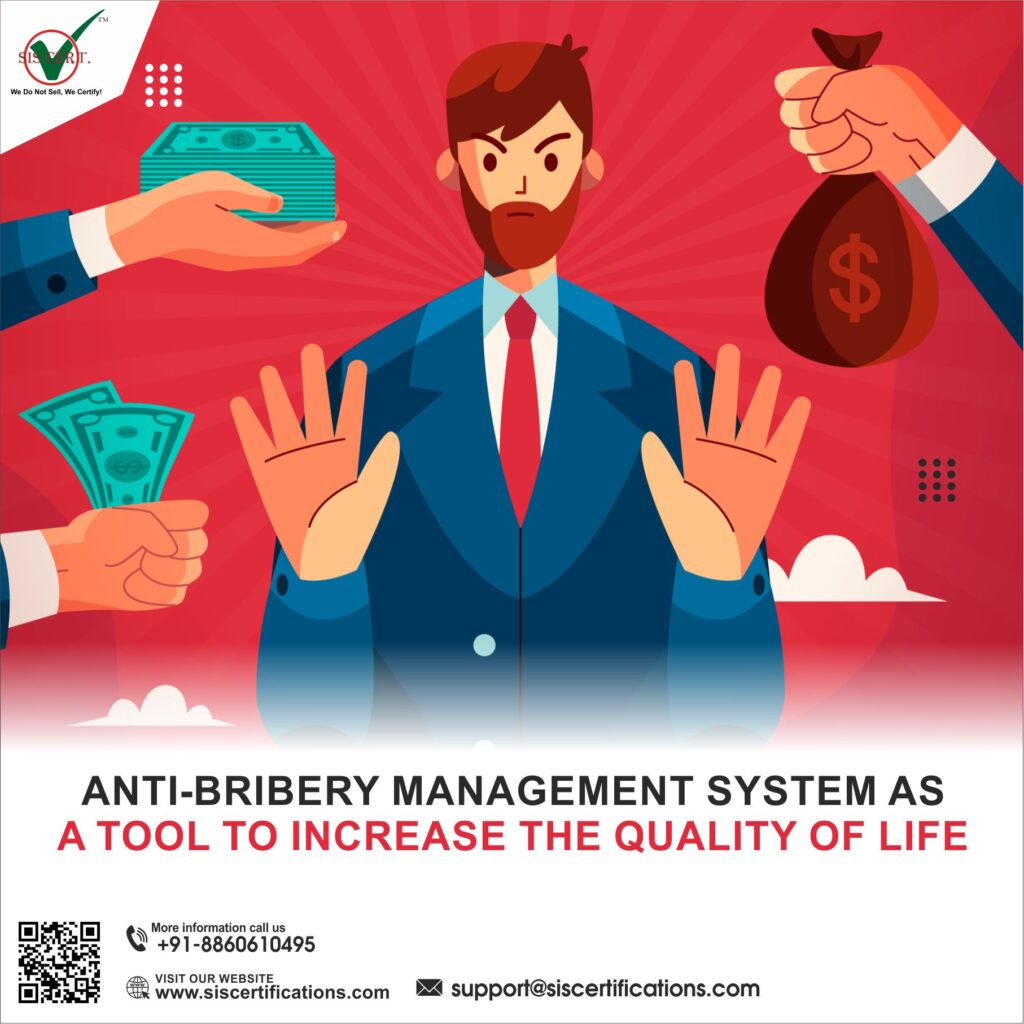
Introduction ⮯ Everyone strives for self-realization via the use of available resources and aspires to live a decent life. A quality of life can be used to explain all characteristics connected to that objective. A decent existence includes living in a world free of corruption. Corruption is at least as old as Adam’s apple. Bribery is the act of directly or indirectly offering, promising, providing, accepting, or soliciting an advantage as an inducement or reward for someone acting-or refraining from acting-in connection with the performance of that person’s duties. Regardless of the level of social and economic progress, corruption exists in all nations. Where the public and private sectors converge, it is most likely to happen. It might be split into two primary groups:- Petty corruption:- Public employees who may be badly underpaid and who depend on minor rent payments from the public to support their families and pay their children’s school fees engage in petty corruption. Grand corruption:– high-ranking governmental officials who decide on major public contracts. Bribery increases the cost of doing business, distorts competition, misallocates resources, threatens market efficiency and predictability, promotes illegal and unethical behaviour, erodes public support for the rule of law, threatens development initiatives, and slows economic growth. The expenses of bribery have a significant impact on quality of life. The Link Between Corruption and Quality of Life: Exploring the Impact on Society ⮯ Corruption has a profound impact on the quality of life within a society, with far-reaching consequences for its citizens. The link between corruption and various aspects of societal well-being has been extensively studied, shedding light on the detrimental effects it can have on social inequality, economic growth, trust in institutions, and the improvement of public services. One of the most evident consequences of corruption is its contribution to social inequality. When resources are misappropriated or embezzled by corrupt individuals or entities, it exacerbates disparities between the rich and the poor. This creates a cycle of poverty and limited access to essential services such as healthcare, education, and infrastructure for those who need them most. Furthermore, corruption hampers economic growth by distorting market mechanisms and discouraging foreign investments. It undermines fair competition and creates an environment where bribery and favouritism prevail over merit-based decision-making. As a result, businesses may hesitate to invest in countries plagued by corruption, leading to reduced job opportunities and overall economic stagnation. Trust in institutions is another casualty of widespread corruption. When citizens witness their leaders engaging in corrupt practices without being held accountable, it erodes their faith in government bodies responsible for upholding justice and fairness. This erosion of trust can lead to social unrest, political instability, and a loss of confidence in democratic processes. Moreover, public services suffer greatly under corrupt regimes. Funds meant for infrastructure development or improving healthcare systems often end up lining the pockets of corrupt officials instead. This not only deprives citizens of essential services but also perpetuates a culture where systemic inefficiencies persist due to a lack of accountability. The link between corruption and quality-of-life indicators is undeniable. It breeds social inequality by diverting resources away from those who need them most while hindering economic growth through unfair practices that discourage investment. Trust in institutions is shattered as citizens witness impunity among corrupt individuals holding positions of power. Lastly, public services bear the brunt of corruption, leaving communities without adequate access to essential services. To improve society and enhance the quality of life, combating corruption must be a priority at all levels. The Benefits of an Effective Anti-Bribery Management System on Individuals and Communities An effective ISO 37001 Certification standard can have numerous benefits for both individuals and communities. By combatting corruption and bribery, such a system ensures better access to quality services and resources for everyone involved. One of the key advantages is the enhanced trust among citizens. When individuals see that their government or organizations are actively working towards preventing bribery, it instils confidence in the system. This trust leads to increased participation, cooperation, and overall societal well-being. Additionally, an effective anti-bribery management system contributes to an improved business environment. When businesses operate in an environment free from corruption, they can focus on fair competition and innovation. This fosters economic growth, attracts investments, and creates job opportunities for individuals within the community. Moreover, such a system strengthens the rule of law. It sends a clear message that no one is above the law and that corrupt practices will not be tolerated. This helps establish a sense of justice and equality within society. Conclusion ✅ In conclusion, implementing an effective anti-bribery management system brings about numerous benefits for individuals and communities alike. It ensures better access to quality services and resources while enhancing trust among citizens. Furthermore, it creates an improved business environment and strengthens the rule of law – all crucial elements for sustainable development and prosperity. With an anti-bribery management system, anti-bribery efforts can be more effective at the organisational level. It is a tool that can help organisations, but its effectiveness depends on the top management’s genuine engagement. It is conceivable to put the system into place only for marketing purposes. To be genuinely successful, an organization’s whole mindset and culture of corruption must be altered. The amount of corruption in a country, including the number of organisations, individuals, and government officials that take or demand bribes, is a factor in an anti-bribery management system’s effectiveness. Enjoy Reading – Know About ISO 37001 Standard ISO 37001: Anti-Bribery Management System-Benefits and Implementation Non-Conformity and Corrective Action Major/Minor Non-Conformances : Explored in Detail
ISO 37001: Anti-Bribery Management System-Benefits and Implementation
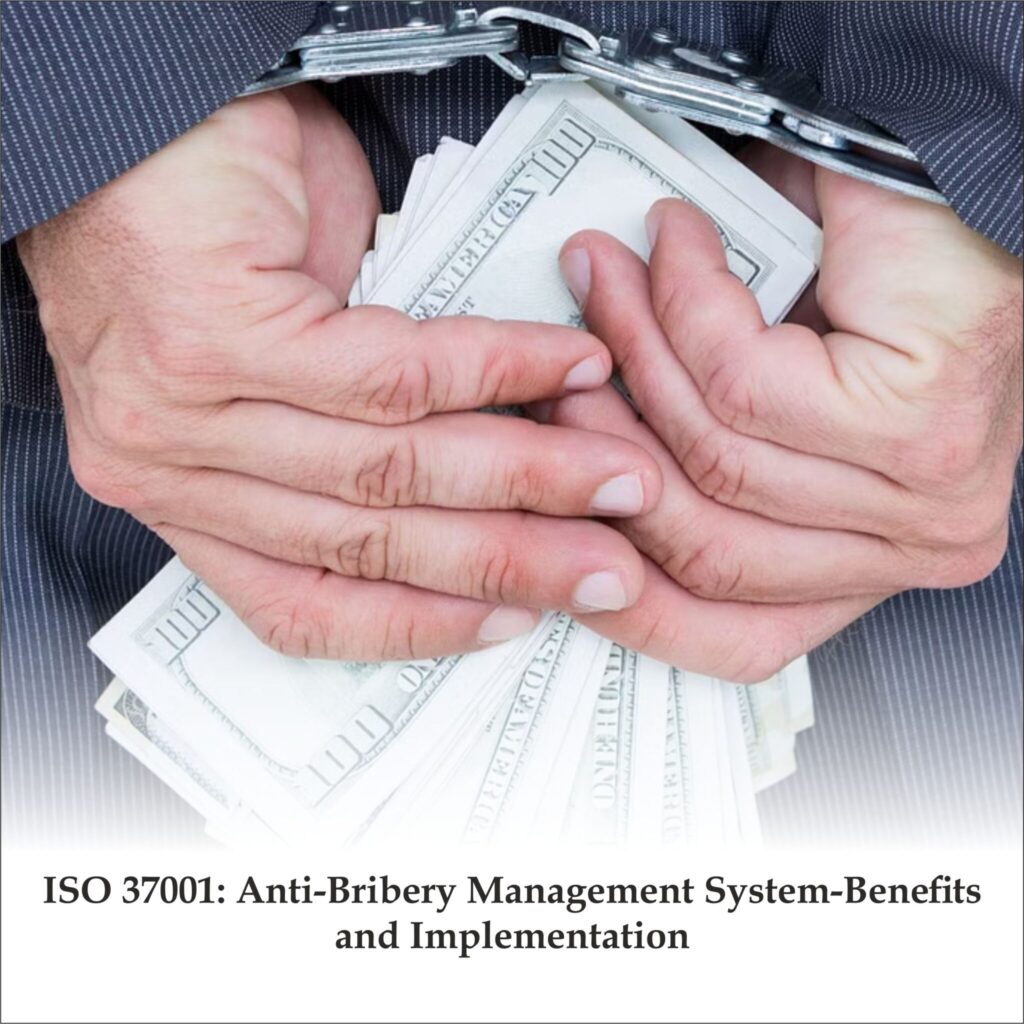
Welcome to our blog post on ISO 37001, the game-changing Anti-Bribery Management System that promises a brighter and more ethically impenetrable future. In a world where corrupt practices run rampant, businesses need an effective solution to combat bribery head-on. Join us as we explore the incredible benefits of implementing ISO 37001 certification and discover how this system can revolutionize your organization’s integrity, compliance, and reputation. Get ready to unlock the secrets behind successful anti-corruption practices and embark on a transformative journey towards building trust within your industry. Introduction to ISO 37001: Anti-Bribery Management System An ISO 37001 Anti-Bribery Management System (ABMS) provides a framework for organizations to control bribery. It helps organizations identify, assess and manage bribery risks and provides guidance on designing and implementing effective anti-bribery controls. ISO 37001 standard comprises a collection of requirements that a company must adhere to to manage its anti-bribery systems. Bribery-related corruption is a threat, particularly for organisations that need to develop trust with their stakeholders to remain relevant. An organization’s particular bribery risks must be understood, and effective controls must be put in place to reduce those risks, according to ISO 37001, which takes a risk-based approach. To avoid bribery at all levels of their operations, the standard offers organisations a framework for establishing anti-bribery policies, processes, and controls. ISO 37001 Certification Benefits ⮯ -The ISO 37001 standard places a strong emphasis on doing thorough due diligence on business partners and putting safeguards in place to avoid bribery in the supply chain. This makes it possible for businesses to choose and manage dependable and trustworthy business partners, lowering the chance of being linked to bribery actions by third parties. -ISO 37001 also enables your business to perform better daily by ensuring that your organisation has a culture that prioritises transparency and reduces the risk of bribery, with this culture, it is possible to set goals and objectives that encourage diligence and the capacity to monitor and evaluate to lower the risk of bribery. -ISO 37001 Certifications help to demonstrate to the prosecutors or courts that the organisation has taken reasonable efforts to prevent bribery in the case of a bribery inquiry involving the organisation. Because of this, it could help in avoiding or minimising prosecution. -ISO 37001 Anti-Bribery Management System Increases certainty and transparency around anti-bribery procedures. It adheres to ethical business principles and keeps all stakeholders updated on the organization’s stance against bribery. – Numerous governmental organisations, businesses, and international organisations favour doing business with suppliers and business partners that have put effective anti-bribery procedures in place. Implementation of ISO 37001 might provide you with a competitive edge, creating new business prospects and alliances. The Step-by-Step Implementation Process for ISO 37001:2016 standard ⮯ ISO 37001 standard, implementation process, anti-bribery management system, compliance, risk assessment, training and communication. Implementing ISO 37001 standard, the international standard for anti-bribery management systems is a crucial step for organizations committed to maintaining ethical practices and mitigating bribery risks. By following a well-defined implementation process, companies can establish robust systems to prevent bribery and ensure compliance with legal requirements. The first step in the implementation process is conducting a comprehensive risk assessment. This involves identifying potential bribery risks within the organization’s operations and assessing their likelihood and impact. By understanding these risks, companies can develop targeted controls and measures to effectively manage them. Once the risk assessment is complete, organizations need to establish an anti-bribery policy that aligns with ISO 37001 requirements. This policy serves as a guiding document that outlines the company’s commitment to preventing bribery and sets clear expectations for employees at all levels. Next comes the crucial stage of training and communication. Employees need to be educated on the principles of ISO 37001 compliance, their roles in preventing bribery, and how they should report any suspected incidents or concerns. Regular training sessions should be conducted to ensure ongoing awareness and understanding of anti-bribery measures. Following this, organizations should implement specific controls such as financial controls, due diligence procedures for third parties, gift policies, whistle-blower mechanisms, and internal auditing processes. These controls help detect potential instances of bribery while ensuring transparency in business practices. Achieving ISO 37001 certification successfully requires consistent monitoring and review of the implemented measures. Regular audits are essential to assess whether the anti-bribery management system is functioning effectively or if any improvements are needed. Lastly, it is important for organizations to continually update their systems based on evolving best practices or changes in legislation related to anti-bribery measures. This ensures that they stay ahead of emerging threats while maintaining compliance with international standards. By following this step-by-step implementation process, organizations can establish a robust anti-bribery management system in line with ISO 37001 compliance. This not only helps protect the integrity of their operations but also enhances their reputation as responsible and ethical entities in the business world. ISO 37001 Certification Process The review of your company’s present anti-bribery procedures is the first step in the multi-phase ISO 37001 certification process. You will start the certification procedure once it has been established that your company complies with the ISO 37001 standard. Applying to a recognised certification authority is the initial step in the certification process. You will be scheduled for an on-site audit when your application has been examined and accepted. The on-site audit entails an examination of your organization’s anti-bribery policies and documents. You’ll get a certificate of compliance from the certification authority following the on-site audit. You will need to continuously uphold your compliance with the ISO 37001 standard as a requirement of the certification process. You must provide the certifying organisation with yearly reports attesting to your continuous compliance. Your accreditation may be stopped or cancelled at any moment if it is determined that your organisation is not following the standard. ISO 37001 Certification Cost The cost of ISO 37001 certification is based on a variety of variables, including the company’s size, location, industry sector, and number of sites. The time frame of the audit and, consequently, the cost are influenced by the
